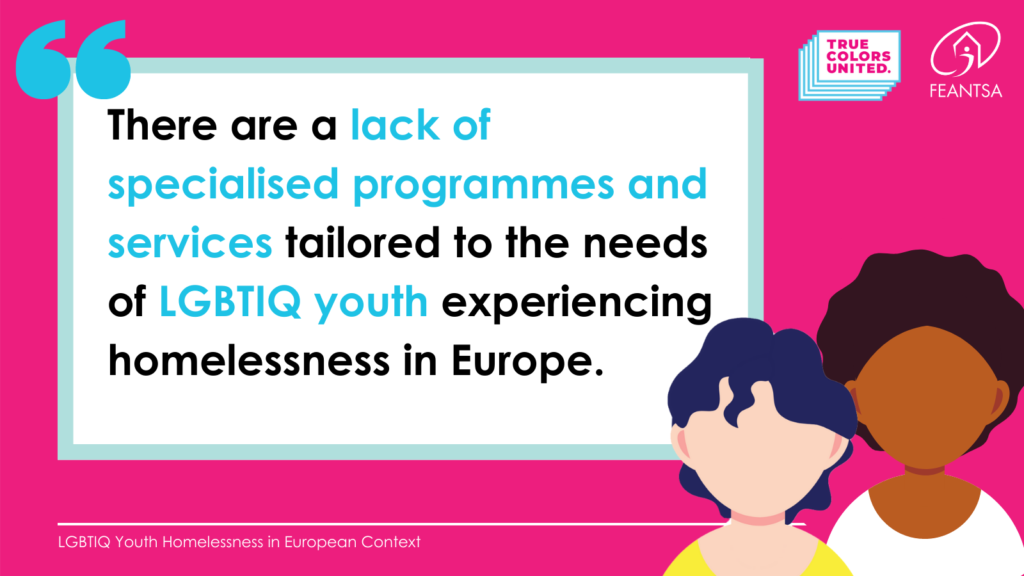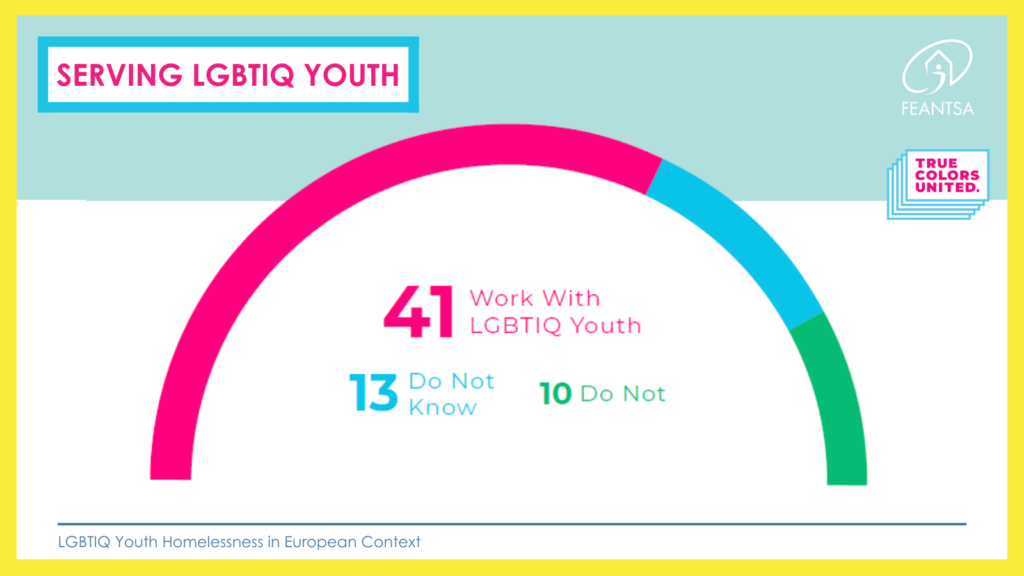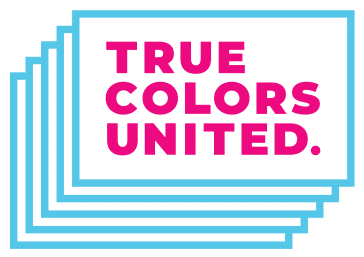
True Colors United’s new report with FEANTSA report reveals huge gap between need and provision in Europe.
To mark LGBTIQ History Month, FEANTSA, True Colors United, and the Silberman Center for Sexuality and Gender released our report Perceptions: Findings from a European Survey of Homelessness Service Providers about LGBTIQ Youth Homelessness on Monday, October 26, 2020.
The report, summarizing findings from the 2019 LGBTIQ Youth Homelessness in Europe Survey, reveals that while a promising 64% of homeless services recognize that they work with LGBTIQ youth, only 13% provide specialized services for LGBTIQ youth, and a meager 8% provide specialized services for transgender youth. Specialized services refer to services that take into account the unique challenges and needs of LGBTIQ youth as members of a socially stigmatized and marginalized group and are thus critical to supporting sustainable and swift exits out of homelessness.
Check out the full report here.
Following the data published by the Fundamental Rights Agency in May which found that 1 in 5 LGBTIQ people have experienced homelessness, these findings reveal a vast gap between the real demographic of the homeless population and the capacity of services.
Responding to the need for more information, the 2019 LGBTIQ Youth Homelessness in Europe Survey was designed to explore the experiences of homelessness organizations in providing services to LGBTIQ youth, and to estimate the prevalence of LGBTIQ youth being served by responding organizations. The resulting report represents a first step in a research project that will establish a baseline of understanding about LGBTIQ youth homelessness across the region and inform the development of resources for homeless service providers.
The need for such a baseline of understanding has been reinforced by the results of the survey itself: the majority of respondents (63%) reported that their organizations could benefit from support and guidance in order to better support homeless LGBTIQ youth. This acknowledgement is a positive indicator of organizations’ willingness to receive assistance to enhance their ability to effectively work with LGBTIQ youth.
Freek Spinnewijn, Director of FEANTSA, says, “While our report paints a stark picture, there are some positive takeaways. The vast majority of homeless services recognize the existing gaps in services and are ready to bridge this divide. For this to be possible, all stakeholders must play a role. At the European level, the upcoming LGBTIQ Strategy and initiative on ending homelessness must incorporate LGBTIQ homelessness. Organizations like FEANTSA & True Colors United must do more to support services to improve their offering to LGBTIQ youth, while services working with young people in the frontline need to accept the hidden reality of LGBTIQ youth homelessness.”
The survey also demonstrates a need for adopting a standardized procedure for collecting data about the sexual orientation and gender identity of service users. While the majority of respondents said they work with LGBTIQ youth, they have no data collection system in place. When respondents were asked how they know they work with LGBTIQ youth, the most common response (44%) was “we do not ask on intake forms, but youth tell staff,” followed by (22%) “no specific way, we just know.”

Data and training are the foundations to progress.
Furthermore, a mere 8% of homelessness services collect information about sexual orientation. Adopting a systematized procedure for the collection of sexual orientation and gender identity data from service users (in locations where it is safe to do so) is essential to understanding LGBTIQ youth homelessness across Europe and implementing effective and systematic response.
Gregory Lewis, Executive Director & CEO of True Colors United, says, “Every young person around the globe deserves a safe and stable place to call home, and for LGBTIQ youth that unfortunately is a reality that requires increased focus and effort to achieve. We know that data and training serve as the foundations to ensuring that LGBTIQ youth experiencing homelessness get the help they need and deserve. In North America, we have seen firsthand the progress that can be made when we start from that foundation. The same progress is possible in Europe if we work united to make it happen. This report is a meaningful first step in that journey.”
The report reaffirms that there is a lot that we do not know about LGBTIQ homelessness in Europe. However, it also shows that homelessness services are overwhelmingly open to learning more and supporting LGBTIQ youth. It is hoped that this report can be the first step on the path to a broader knowledge base for homeless services working with LGBTIQ youth. This month, let us continue making LGBTIQ history in ensuring that the whole community is supported.
